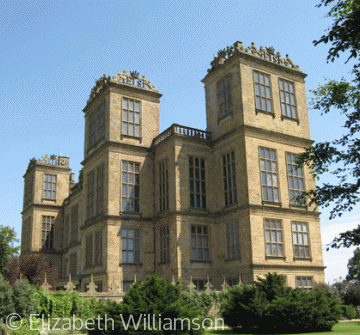Hardwick New Hall

Hardwick New Hall is famous as the home of the one of the most powerful women of the 16th century, Elizabeth countess of Shrewsbury, whose initials crown the mansion's silhouette. Bess of Hardwick had already built herself one mansion, now called the Old Hall, when she started a second at the end of 1590. The death of her husband, George Talbot 6th earl of Shrewsbury, brought her a widow's dower income of about £3,000 a year to add to the income from her other estates. This fortune enabled her to start the New Hall and a second house at nearby Oldcotes. The shell of the New Hall was complete by 1593 and Bess moved into her new house in 1597, although the finishing touches continued for some time afterwards. By 1608 the New Hall at Hardwick had become the administrative hub of a large estate which stretched from the Tees Valley to the Vale of Belvoir.The New Hall is compact building and was used in conjunction with accommodation in the neighbouring Old Hall ; there were also separate service buildings. Unlike the Old Hall, which seems to have incorporated the existing Hardwick manor house, the New Hall was built from scratch to a single design. The work was undertaken by Robert Smythson, a leading Elizabethan designer of great houses, whose family later worked for Bess's son at Bolsover Castle. The tall symmetrical house with classical details and huge windows is typical of Smythson's architectural designs. A central two-storeyed great hall is flanked by the kitchen and other service rooms. Bess's own rooms are on the floor above, with the top floor reserved for huge state rooms in which to entertain visitors and walks on the roof above.
Content generated during research for the paperback book 'Hardwick: A Great House and its Estate' (ISBN 13 : 978-1-86077-544-4) for the England's Past for Everyone series




